Set Of Brushes And Needle-Points For Paint Item Number: E88905-0 from the National Museum of Natural History
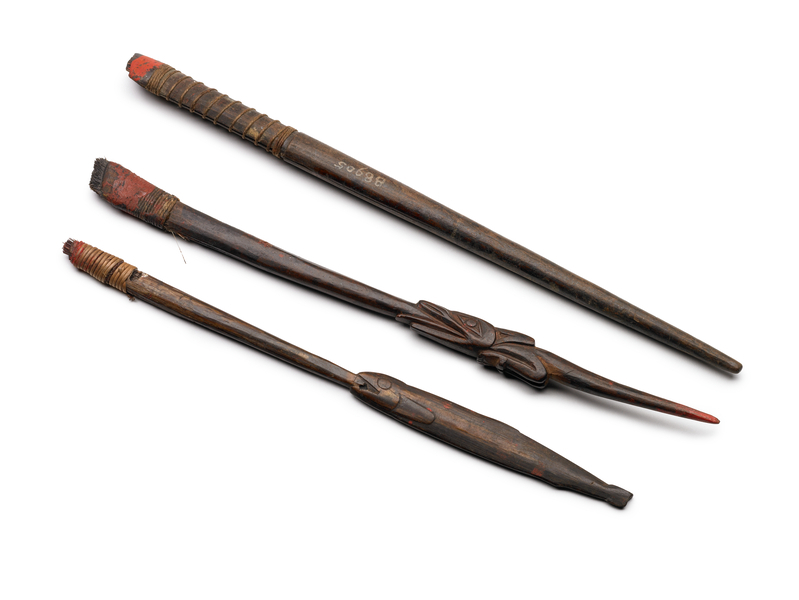
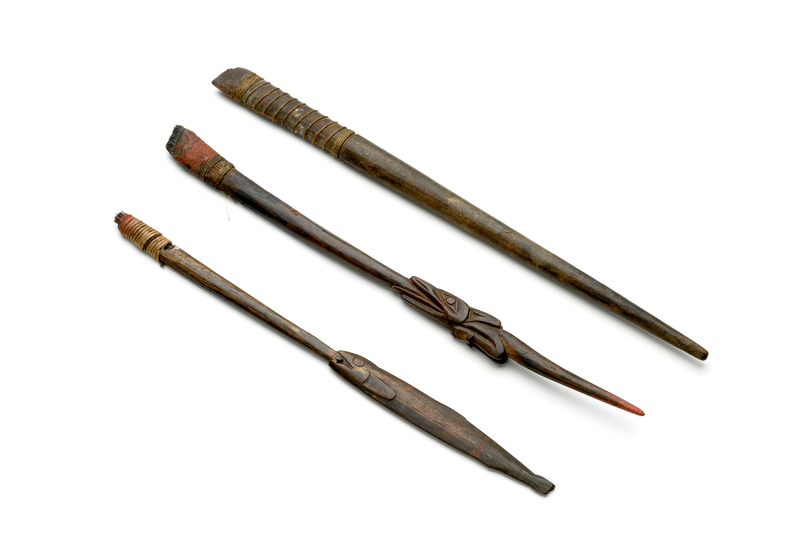


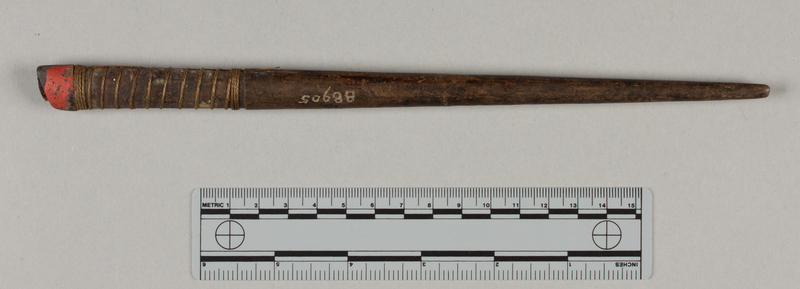

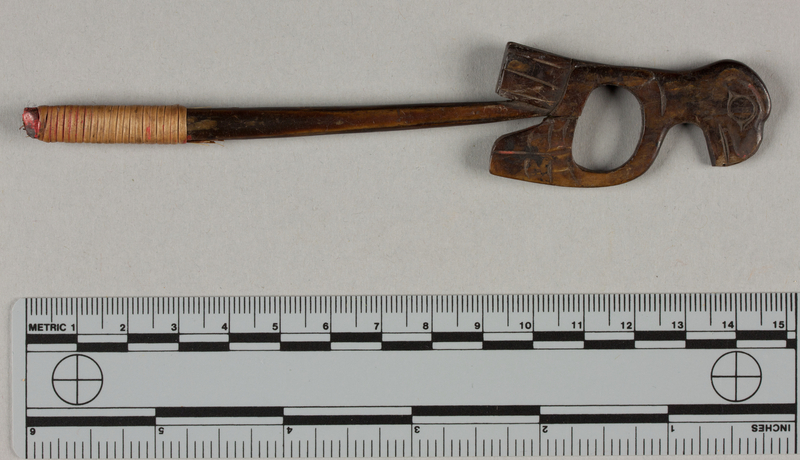
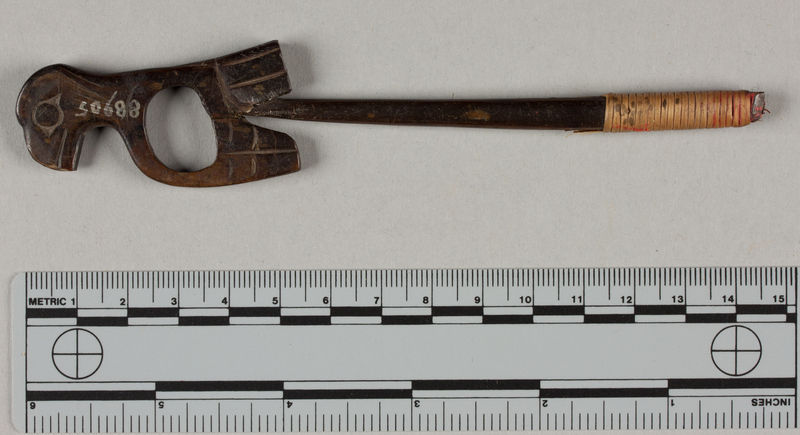
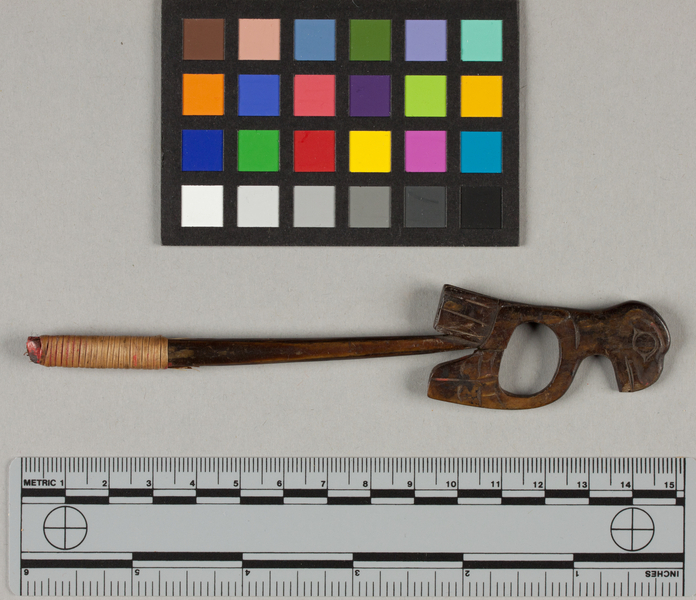
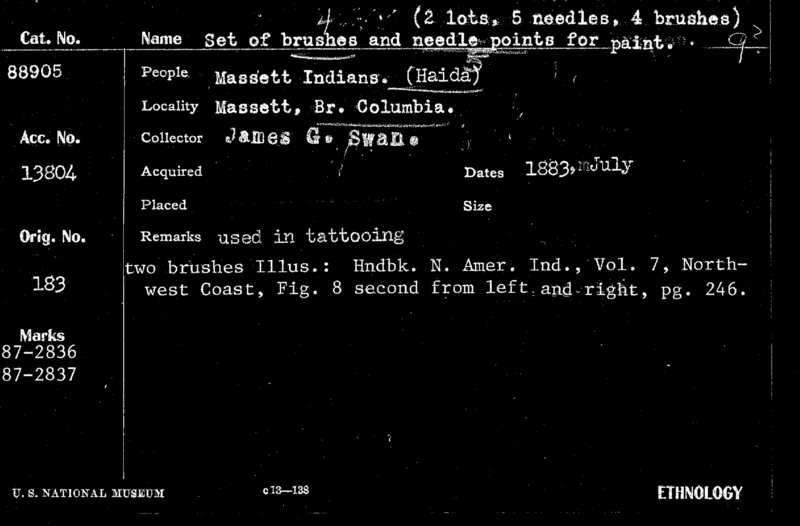
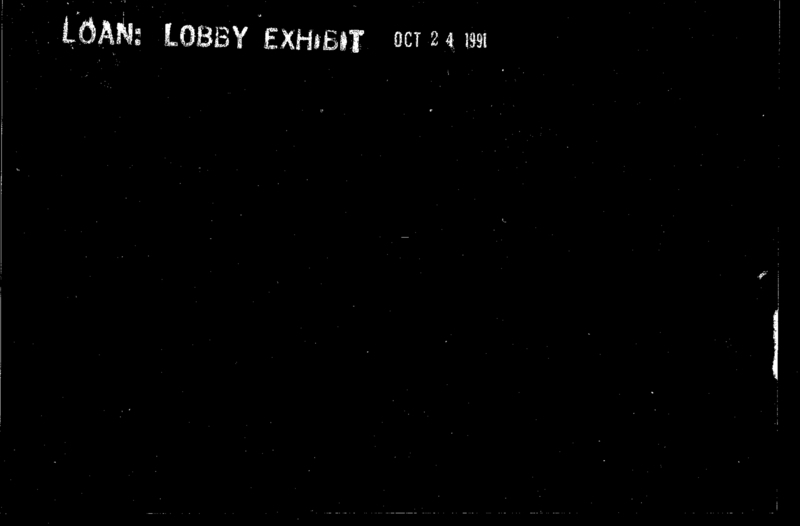
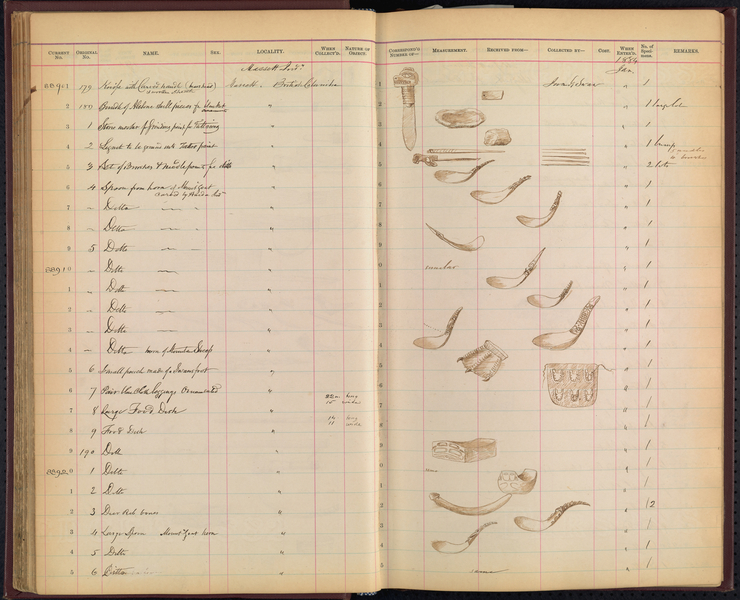
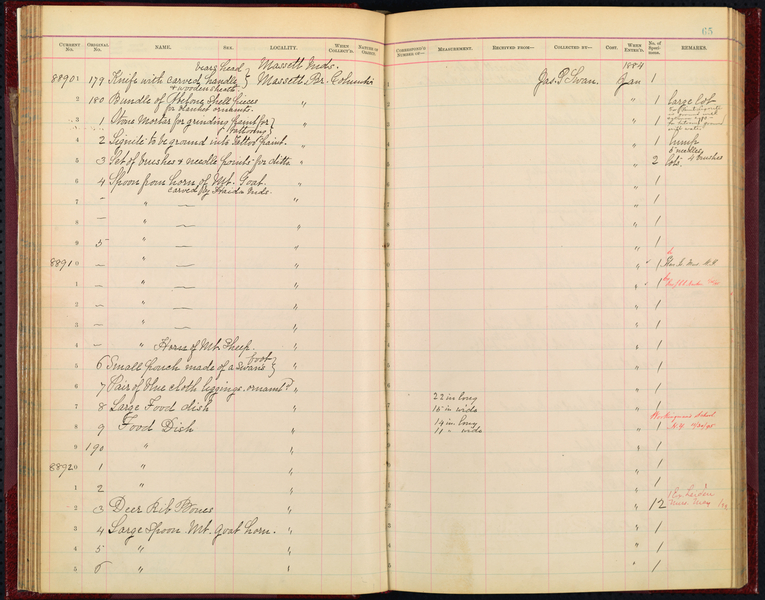
Notes
From card: "Used in tattooing. Two brushes [brush # 4 of 4 and brush # 2 of 4] Illus.: Hndbk. N. Amer. Ind., Vol. 7, Northwest Coast, Fig. 8, second from left and right, pg. 246. Loan [brush with bird handle, brush # 4 of 4 only was on loan]: NHB Lobby Exhibit Oct 24, 1991." Originally catalogued as consisting of 4 brushes and 5 needles. As of 2005, only the 4 brushes are present. Brush 1 of 4 has a plain handle. Brush 2 of 4 has a salmon on the handle. Brush 3 of 4 has a land otter on the handle. Brush 4 of 4 has a bird on the handle. ET15006 may be the needles from this set? - F. Pickering 5-31-2005 . Neg. #2005-22349 is a photo of 3 paint brushes #E88905 (# 1 of 4; # 2 of 4 and # 3 of 4) with the 5 needles # ET15006.Part of this object is on loan to the Anchorage Museum at Rasmuson Center, from 2010 through 2027. Only 2 of the 4 brushes are on loan: #2 of 4 (also called B) with salmon carving, and #3 of 4 (also called C) with land otter carving.Source of the information below: Smithsonian Arctic Studies Center Alaska Native Collections: Sharing Knowledge website, by Aron Crowell, entry on paint brush 2 of 4 (also called B) and paint brush 3 of 4 (also called C), http://alaska.si.edu/record.asp?id=621 and http://alaska.si.edu/record.asp?id=622, retrieved 6-24-2012: The two paint brushes were part of a set that also included tattoo needles, suggesting they may have been owned by an artist who specialized in body decoration. Clan designs were painted on the face for dances, ceremonies, girls' initiation, and death; tattoos were an important symbol of high rank, applied by paid artists of the opposite moiety (clan group) during potlatches. When the tip of a traditional brush wore down the artist restored it by pulling the bristles farther out of the handle.The handle of brush 2 of 4 represents a salmon. The handle of brush 3 of 4 represents a long-tongued land otter. The otter's tongue, emphasized by the carver, was the seat of its powerful spirit. "To make a paint brush they would take a small piece of wood and tie it about four inches from the end, then split it down to where the tie stopped it…They placed the hair inside the split… They used guard hairs from the porcupine because they are hollow and take up the paint." - Donald Gregory (Tlingit), 2005
Item History
- Made in Masset, British Columbia, Canada
- Collected by James G. Swan in Masset, British Columbia, Canada during July 1883
- Received on December 21, 1883
What
- Name
- Set Of Brushes And Needle-Points For Paint
- Identification Number
- E88905-0
- Type of Item
- tattoo tool
Who
- Culture
- Haida
- Field Collector
- James G. Swan
Where
- Holding Institution
- National Museum of Natural History
- Made in
- Masset, British Columbia, Canada
- Collected in
- Masset, British Columbia, Canada
When
- Collection Date
- during July 1883
- Acquisition Date
- on December 21, 1883
Other
- Accession Number
- 013804